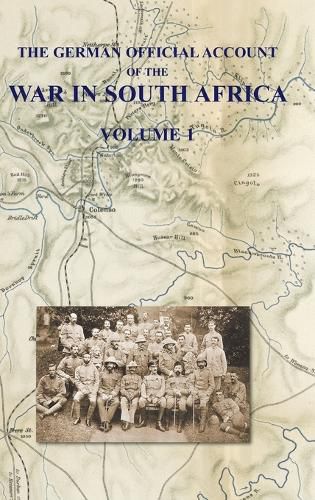Readings Newsletter
Become a Readings Member to make your shopping experience even easier.
Sign in or sign up for free!
You’re not far away from qualifying for FREE standard shipping within Australia
You’ve qualified for FREE standard shipping within Australia
The cart is loading…






This title is printed to order. This book may have been self-published. If so, we cannot guarantee the quality of the content. In the main most books will have gone through the editing process however some may not. We therefore suggest that you be aware of this before ordering this book. If in doubt check either the author or publisher’s details as we are unable to accept any returns unless they are faulty. Please contact us if you have any questions.
The two-volume (+ map compendium) set of 'The German Official Account of the War in South Africa' is one of the most significant books written about the Second Anglo-Boer War. Both the first phase - the Boer offensive (October to December 1899) - and the second phase - the British offensive (January to September 1900) - are detailed. The history is characterised by the thoroughness, which is a prominent feature of German official productions of this period, and despite criticisms of the British methods and military tactics, is written in an objective and unbiased manner.
The conflict broke out in 1899 after the failure of the Bloemfontein Conference when Boer irregulars and militia attacked colonial settlements in nearby British colonies. Starting in October 1899, the Boers placed Ladysmith, Kimberley and Mafeking under siege, and won a string of victories at Colenso, Magersfontein and Stormberg. In response to these developments, increased numbers of British Army soldiers were brought to Southern Africa and mounted largely unsuccessful attacks against the Boers. However, British military fortunes changed when their commanding officer, General Redvers Buller, was replaced by Lord Roberts and Lord Kitchener, who relieved the three besieged cities and invaded the two Boer Republics in early 1900 at the head of a 180,000-strong expeditionary force. The Boers, aware they were unable to resist such a large force, chose to refrain from fighting pitched battles, allowing the British to occupy both republics and their capitals, Pretoria and Bloemfontein.
When the Boer War started, the Foreign Office granted permission for military attaches from each 'friendly power' to act as an observer in South Africa. They were instructed to wear British khaki uniforms bearing their national insignia and rank badges; all were later awarded the Queen's South Africa Medal. The history was prepared in the historical section of the great General Staff, Berlin and translated by Colonel Hubert Du Cane (military attache at Sofia). This translation was originally published in 1906. Germany took a keen interest in the Boer War and had many observers.
$9.00 standard shipping within Australia
FREE standard shipping within Australia for orders over $100.00
Express & International shipping calculated at checkout
This title is printed to order. This book may have been self-published. If so, we cannot guarantee the quality of the content. In the main most books will have gone through the editing process however some may not. We therefore suggest that you be aware of this before ordering this book. If in doubt check either the author or publisher’s details as we are unable to accept any returns unless they are faulty. Please contact us if you have any questions.
The two-volume (+ map compendium) set of 'The German Official Account of the War in South Africa' is one of the most significant books written about the Second Anglo-Boer War. Both the first phase - the Boer offensive (October to December 1899) - and the second phase - the British offensive (January to September 1900) - are detailed. The history is characterised by the thoroughness, which is a prominent feature of German official productions of this period, and despite criticisms of the British methods and military tactics, is written in an objective and unbiased manner.
The conflict broke out in 1899 after the failure of the Bloemfontein Conference when Boer irregulars and militia attacked colonial settlements in nearby British colonies. Starting in October 1899, the Boers placed Ladysmith, Kimberley and Mafeking under siege, and won a string of victories at Colenso, Magersfontein and Stormberg. In response to these developments, increased numbers of British Army soldiers were brought to Southern Africa and mounted largely unsuccessful attacks against the Boers. However, British military fortunes changed when their commanding officer, General Redvers Buller, was replaced by Lord Roberts and Lord Kitchener, who relieved the three besieged cities and invaded the two Boer Republics in early 1900 at the head of a 180,000-strong expeditionary force. The Boers, aware they were unable to resist such a large force, chose to refrain from fighting pitched battles, allowing the British to occupy both republics and their capitals, Pretoria and Bloemfontein.
When the Boer War started, the Foreign Office granted permission for military attaches from each 'friendly power' to act as an observer in South Africa. They were instructed to wear British khaki uniforms bearing their national insignia and rank badges; all were later awarded the Queen's South Africa Medal. The history was prepared in the historical section of the great General Staff, Berlin and translated by Colonel Hubert Du Cane (military attache at Sofia). This translation was originally published in 1906. Germany took a keen interest in the Boer War and had many observers.